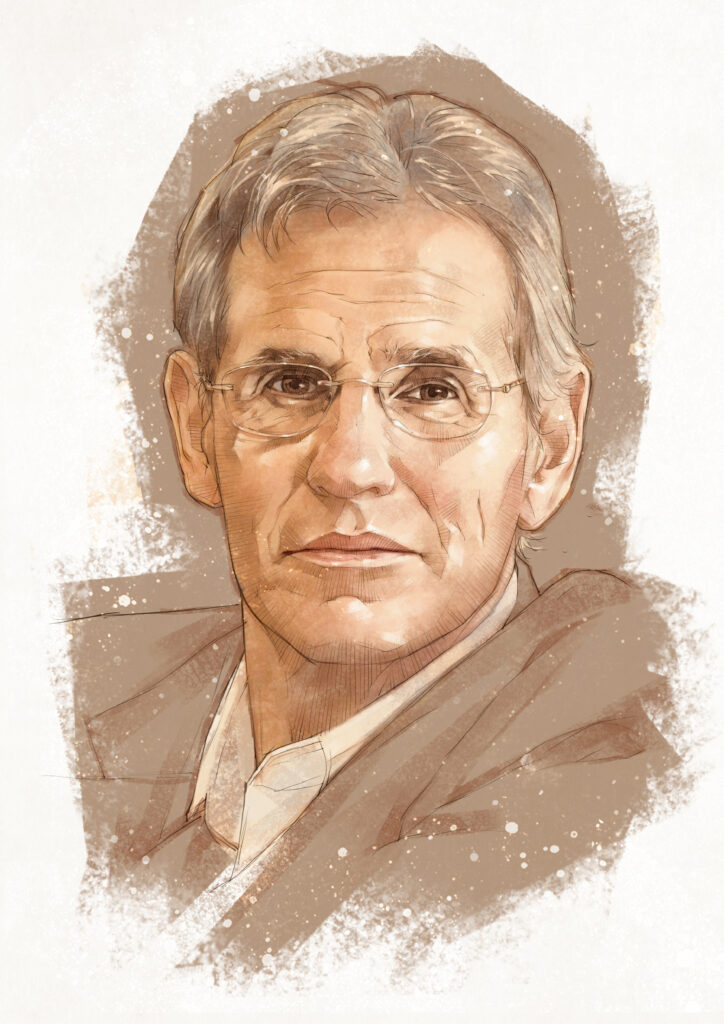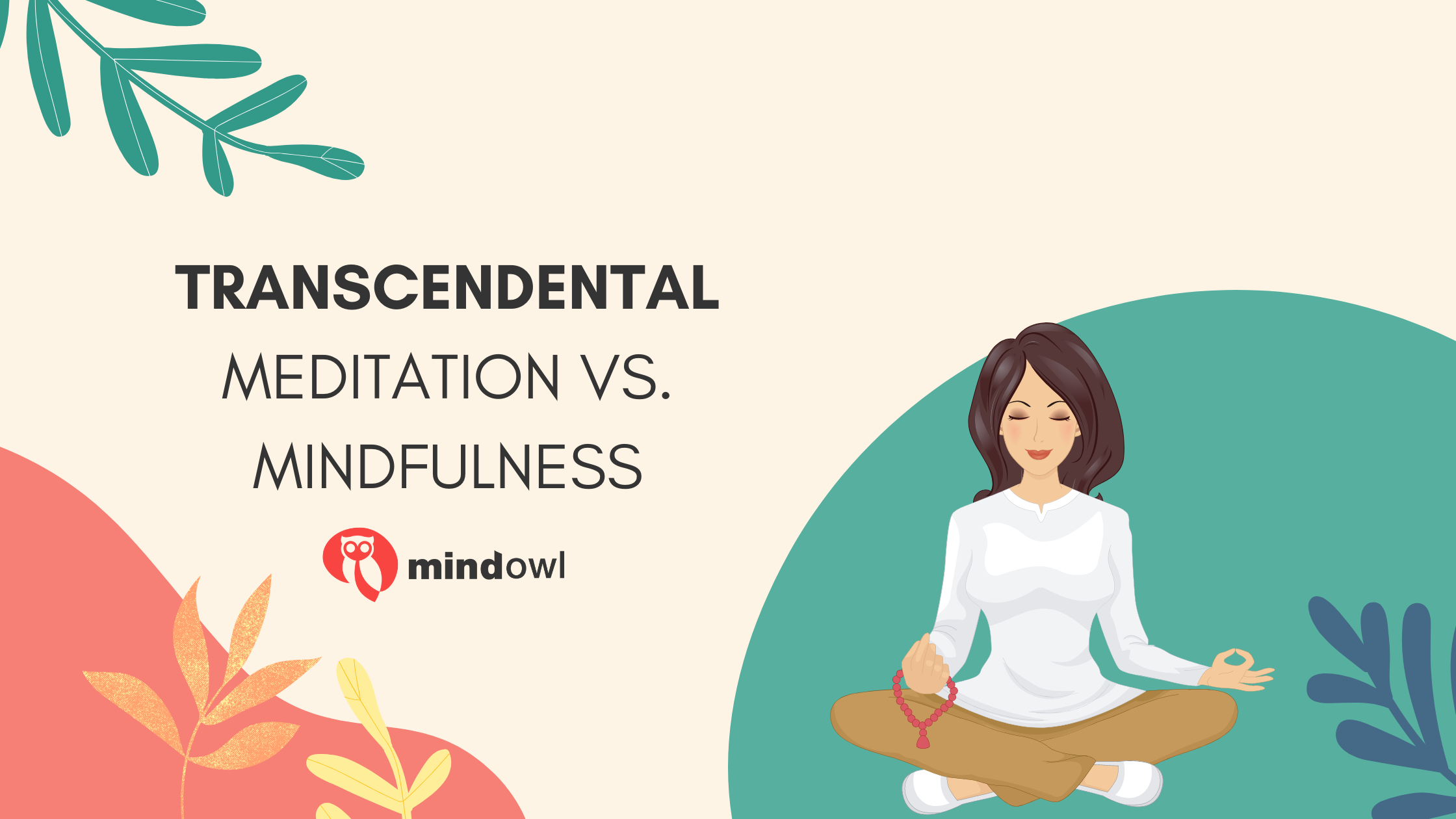Transcendental Meditation vs Mindfulness which one is right for you?
Today’s most popular mindfulness and meditation techniques have strayed somewhat from the ancient spiritual roots of the practice. Disciplines such as Mindfulness-Based Stress Reduction (MBSR) apply traditional ideas within a modern context, demonstrating how pain, anxiety and stress levels can be reduced using mindful techniques. Other practices incorporate a more psychological gaze.
Transcendental Meditation and Mindfulness, however, are both strongly influenced by traditional spiritual paths. However, their similarities are minimal— these are two types of meditation practice that many people see as opposed. In today’s article, we’re going to explore the main differences between Transcendental Meditation (TM) and Mindfulness. We’ll discuss the origins and benefits of each practice, as well as look into some of the criticism and controversy that TM faces. But first, let’s quickly look at how to define both terms.
What Is Mindfulness?
The term mindfulness encompasses a wide variety of practices, including Loving-Kindness, Noting Practices, and Mindfulness-Based Stress Reduction. Different methods work for different people, and any dogma on this subject should be avoided because there’s no right or wrong way to meditate. That being said, there are a few founding principles that most people agree on:
- Mindfulness focuses on cultivating attentional skills of concentration, sensory clarity and equanimity
- Practices are guided by a process of non-judgemental observation
- Mindfulness is intended to make us calmer and more present-minded
Within these broad parameters, practitioners are encouraged to experiment with different techniques and see what suits them best. Regular practice can help tackle anxiety and depression, enhance mental clarity and awareness, and boost empathy and compassion levels. Mindfulness has no fixed rules regarding session length; however, it’s recommended by many that around 10-20 minutes of mindfulness meditation practice per day is an optimal amount.
You can find out more in our article on the difference between mindfulness and meditation.

Mindfulness was popularized in Europe and North America by writers like Jon Kabat-Zinn and Pema Chodron, and its modern incarnation is often a far more secular practice.
What is Transcendental Meditation?
Transcendental Meditation is a specific meditative technique that has become increasingly popular in the West in recent decades. This is largely due to the endorsement of celebrities such as Oprah Winfrey, Hugh Jackman, and Jerry Seinfeld, who have embraced its suggested twice-daily 20-minute meditations. TM is a form of mantra meditation that encourages practitioners to repeat a particular phrase again and again in order to induce stillness, tranquillity and relaxation. It has been linked to reduced blood pressure, stress and anxiety, improved mental health and the relief of Post-Traumatic Stress Disorder symptoms.
There are two main approaches to TM; spiritual and secular. With the former, participants are initiated to a group, in which they adopt a mantra, a world view and a devotion to a particular lineage of teachers. The secular approach allows practitioners to choose their own mantra, with no initiation or devotion required. That being said, all forms of TM are taught exclusively by certified teachers. But more on that later.
What Are Their Origins?
It’s important to distinguish between the respective origins of these two meditative practices. Transcendental Meditation was first created by Indian yoga guru Maharishi Mahesh Yogi in the 1950s. Put simply, TM is a form of silent, mantra-based meditation, rooted in the Indian Vedic tradition (which is closely related to Hinduism). The popularity of the technique surged massively in the 1960s, when The Beatles travelled to India to seek spiritual guidance from Yogi. Since then, TM has gained more and more Western followers.
Mindfulness, on the other hand, is derived primarily from ancient Buddhist practices. The Buddhist concept of sati (meaning ‘awareness’ in Pali) represents the root of what we call mindfulness today. According to the academic Tse fu Kuan, sati incorporates bare moment-to-moment attention, introspective awareness, control and restraint over the six senses, and deliberate awareness focused on forming inspiring conceptions. Mindfulness was popularized in Europe and North America by writers like Jon Kabat-Zinn and Pema Chodron, and its modern incarnation is often a far more secular practice.

What’s the Difference Between Transcendental Meditation and Mindfulness?
Both Mindfulness and Transcendental Meditation have kicked on from their spiritual roots in Asia to gain massive followings worldwide. But when it comes to how they work in practice, there are some key differences between these two meditative modes. Let’s take a look at them.
1. Mantra vs Anchor
One of the defining elements of TM is that it is structured around a mantra. Within Transcendental Meditation, each individual practitioner is given their own unique mantra to use during meditation (they can also choose this themselves). This could be a comforting phrase, a line of prayer or a verse of poetry, which meditators repeat during sessions as a means of achieving a state of peace, rest and comfort. Generally, TM mantras will be short, memorable, and uplifting, intended to still the mind and shift it away from negative thoughts.
Mindfulness meditation, on the other hand, tends to focus more on the breath, with meditators drawing their attention back to this focus point, or ‘anchor’, whenever they become distracted. Alternative types of anchor can include parts of the body, physical sensations, objects, thoughts, or feelings. The purpose of remaining rooted to anchors like this is to improve concentration levels and train your brain to manage distractions.
2. Effort vs Effortlessness
While mindfulness seeks to encourage greater strength of mind, concentration and awareness skills, Transcendental Meditation has no interest in training attention. In fact, it brands itself as an “absolutely effortless” form of meditation, built around “enabling mind and body to access a special quality of rest.”
This effortless approach is vastly different from the goal of mindfulness meditation. In the latter discipline, experts and meditators accept the tendency of an active mind to wander easily, get distracted, or hold onto unhelpful thoughts and feelings. Mindfulness meditation works to counteract these tendencies via exerted efforts to train attention, concentration and awareness. We’ll elaborate on this shortly.
3. Public vs Private
Arguably the biggest difference between Transcendental Meditation and Mindfulness is that TM is trademarked, with all training provided by an official organisation. In order to practise Transcendental Meditation, you must pay for a course taught by a registered teacher (usually costing around $1000). What’s more, it’s an extremely secretive discipline. Those who are taught TM are expected to keep that knowledge to themselves, and not share their mantras with others.
Mindfulness differs greatly from TM in this respect. There is no official mindfulness organisation; it is an ancient practice stemming from Buddhist traditions, and one that incorporates a number of different disciplines, techniques and exercises. It can be learned for free (or at least, for very little money) from online videos, apps, blog posts, books, or classes, and research on it is done independently by different universities, publications and organisations.
For some of the reasons outlined here (its high cost and exclusivity, for example), Transcendental Meditation has come under fire from certain sectors of the meditation and mindfulness community. Let’s take a look at some of the main areas of criticism.
Critiques of Transcendental Meditation
There are a few aspects of Transcendental Meditation that continue to draw criticism. While we’ve tried to give you a balanced view over both today’s featured practices, it’s important that any beginner meditators are aware of the risks and problems associated with TM. Let’s handle some of the key issues.
The Effortless Myth
TM is built around an assumption that the mind is naturally inclined to return to a place of peace and bliss — the mantra is only there to help the mind get to that point.
However, this just isn’t true. The mind is not built like that; in fact, it’s actually human nature for the mind to torment itself and attach itself to problems, cravings, and trauma. This is proven by psychological phenomena such as the negativity bias, which highlights how evolution has caused the mind to develop for survival, rather than for mental well-being. Historically, human survival has been contingent on people constantly being looking out for potential threats and dangers — you can find out more about that here.
Many masters of meditation have recognised the mind’s tendency to cause itself psychological suffering; that’s exactly why the deliberate mental training provided by mindfulness meditation is necessary.
While there can be some value in letting go of societal pressures to ‘give 110%’ and exert maximum effort at all times, mindfulness advocates argue that ignoring the inherent complexity and negativity of the brain means you will only access a temporary sense of calm, rather than long-term peace of mind. TM doubters suggest that it’s impossible to encourage neuroplasticity and make significant changes to the brain using a passive, relaxation technique like Transcendental Meditation. They argue that only by developing the mind’s active awareness and repeatedly refocusing attention towards the present moment can we experience real change.
Deceitful Marketing
Another problem is the reliability of TM’s marketing. We’re told that every mantra is unique, and this is often true for spiritual mantra-based approach to TM; however, certain TM teachers and students have suggested that there are actually only a few different mantras, and factors such as age, gender and profession determine which one practitioners are given. TM also brand itself as the superior form of meditation, with numerous studies citing the benefits of Transcendental Meditation. But when you look a bit deeper into this research, it’s not necessarily the most trustworthy.
The truth is, the majority of studies focusing on the positive effects of TM are either funded or conducted by people who are affiliated with the official organisation. Familiar names such as Maharishi Mahesh Yogi and David Lynch continue to pop up, alongside other authors who work as consultants for the Maharishi Foundation or connected organisations. You can’t deny the anecdotal evidence that TM has improved the lives of huge numbers of people; however, we should be extremely cautious about the scientific backing the discipline has online.
The Cultist Question
Many people have also claimed that aspects of TM are cult-like. Films such as the German documentary David Wants To Fly explore the incongruities of the practice, while various former advocates of Transcendental Meditation have spoken publicly about some of its cultist attributes.
Some of its critics describe TM as “a spiritual approach to meditation, disguised as a secular approach.” Most mantras have some sort of spiritual significance or a connection to a deity, and a 1979 US Court Ruling described Transcendental Meditation as religious in nature. However, TM brands itself as a non-spiritual meditation technique — and its popularity across the world arguably owes a lot to its misleading marketing as a secular practice.
Which Type Of Meditation Is Right For Me?
So what’s better, Mindfulness or TM? As we’ve discussed, it’s important to be aware of the risks associated with TM. However, if you’ve tried it and found it useful, by all means, continue practising! Different forms of meditation work for different people, so don’t be put off by the claims of others if you’re experiencing positive results. If you want to find out more about mindfulness and Mantra-based meditation, check out our membership plan for further guidance on how to integrate these practices into your life.
We’ll leave you with an interesting point to consider. According to TM enthusiasts, Alpha brainwaves are the signature brainwave of meditation; but in reality, this is a brain pattern we all experience throughout daily life. Meanwhile, the Gamma and Delta brainwaves found in seriously advanced meditators are absent in the brains of experienced TM meditators, meaning that the effects the practice has on your brain are minimal in comparison with mindfulness meditation. Looking at brainwaves is a useful scientific indicator of the effects of meditation. Fancy finding out more? Check out our article on what happens to the brain during meditation.
Frequently Asked Questions
Can I do both mindfulness and Transcendental Meditation?
While there are lots of differences between the two practices, it is possible to engage with both, particularly because they focus on different skill sets, with mindfulness training attention and awareness while TM hones in on a more passive form of relaxation and rest. Both disciplines are valid, and both are extremely popular; however, if you’re looking for more long-lasting inner peace and calmness, mindfulness meditation will provide results.
What is the difference between Vedic and Transcendental Meditation?
Vedic meditation is a form of meditation based on the Vedas, a collection of Hindu scripture. Whereas, Transcendental Meditation (TM), is a trademarked term, meaning the technique was developed by Maharishi Mahesh Yogi and taught only by those associated with his organization, the Transcendental Meditation Movement.
What are TM mantras?
A mantra is usually a Sanskrit word or phrase that helps to focus and concentrate during meditation. But I can be any word, phrase, or sound that you find helpful. In transcendental meditation, the practitioner repeats a mantra chosen by the instructor.
MindOwl Founder – My own struggles in life have led me to this path of understanding the human condition. I graduated with a bachelor’s degree in philosophy before completing a master’s degree in psychology at Regent’s University London. I then completed a postgraduate diploma in philosophical counselling before being trained in ACT (Acceptance and commitment therapy).
I’ve spent the last eight years studying the encounter of meditative practices with modern psychology.




One thought on “Transcendental Meditation vs Mindfulness”